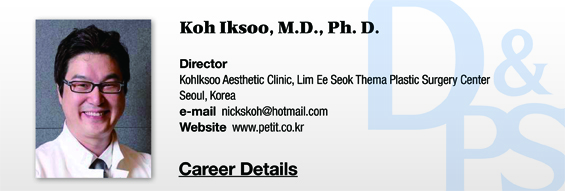If tissue response returns repeatedly, histological changes can occur which leads to the formation of granuloma with a hardened core. Tissue response has very typical pathophysiology which can be easily checked during history taking and consultation and it helps to be familiar with its symptomatology.
1. Swelling recurs and persists in the treated area.
2. It feels harder than the filler to the touch and has irregular, lumpy shape.
3. It can be mistaken for a lasting effect of the filler as the hardness is maintained even 3-4 years after the procedure.
If the injected filler is still hard and lumpy after a considerable time has passed since treatment, granuloma following repeated tissue response should be suspected.
Areas Susceptible to Granuloma and Causes
In my experience, granuloma is particularly likely to occur in the cheek, frontal chin, nose, above the eye, and under the eye, among which the cheek, nose and frontal chin are particularly susceptible and requires caution. This may be due to the fact that harder HA fillers are used in these areas. A high content of the cross-linking agent used for hardness may also increase the risk of tissue response and other side effects.
Not all fillers have the same risk of tissue response. A wide range of dermal filler products have become available and doctors need to carefully choose the best type for the patient and procedure. Unfortunately, tissue response is more frequently seen with recently introduced Korean products, whereas it is rare with foreign products with a good track record. I wonder if the manufacturers are only concerned with profitability in this overheated market and less so with the safety of their products. Manufacturers should consider safety a priority and improve their manufacturing process through the feedback from the medical community.
[Advertisement] FCR® (Fractional Prickle CoralCalcium Regentron) – Manufacturer: (www.illglobal.com)]
Preventing Granuloma
As I have already mentioned, tissue response can arise not just due to the filler properties but also from the patient’s conditions. Association with other diseases have not been clarified but I think the patient’s immunity plays an important role.
The patient’s habits can also play a role. If the patient keeps touching the treated area, the injected filler can over-expand to surrounding areas and trigger immune response. Therefore, it is important to advise patients against massaging or touching the treated area. Also instruct the patient to visit the doctor immediately if edema persists and other signs of tissue response are seen. Repeated tissue responses means a higher risk of granuloma. It is important to prevent tissue response and take appropriate measures.
-To be continued





















